Experimental and numerical investigation on the uniformity of nanosecond pulsed dielectric barrier discharge influenced by pulse parameters
Dongxuan ZHANG (張東璇) ,Junxian YU (余俊賢) ,Mengyao LI (李夢遙) ,Jie PAN (潘杰) ,Feng LIU (劉峰),* and Zhi FANG (方志)
1 College of Electrical Engineering and Control Science,Nanjing Tech University,Nanjing 211816,People’s Republic of China
2 School of Electric Power,South China University of Technology,Guangzhou 510641,People’s Republic of China
3 School of Physics and Electronics,Shandong Normal University,Jinan 250014,People’s Republic of China
Abstract Nanosecond(ns)pulsed dielectric barrier discharge(DBD)is considered as a promising method to produce controllable large-volume and high activity low-temperature plasma at atmospheric pressure,which makes it suitable for wide applications.In this work,the ns pulse power supply is used to excite Ar DBD and the influences of the pulse parameters (voltage amplitude,pulse width,pulse rise and fall times) on the DBD uniformity are investigated.The gas gap voltage(Ug)and conduct current(Ig)are separated from the measured voltage and current waveforms to analyze the influence of electrical parameters.The spectral line intensity ratio of two Ar excited species is used as an indicator of the electron temperature (Te).The time resolved discharge processes are recorded by an intensified charge-coupled device camera and a one-dimensional fluid model is employed to simulate the spatial and temporal distributions of electrons,ions,metastable argon atoms and Te.Combining the experimental and numerical results,the mechanism of the pulse parameters influencing on the discharge uniformity is discussed.It is shown that the space electric field intensity and the space particles’ densities are mainly responsible for the variation of discharge uniformity.With the increase of voltage and pulse width,the electric field intensity and the density of space particles increased,which results in the discharge mode transition from non-uniform to uniform,and then non-uniform.Furthermore,the extension of pulse rise and fall times leads to the discharge transition from uniform to nonuniform.The results are helpful to reveal the mechanism of ns pulsed DBD mode transition and to realize controllable and uniform plasma sources at atmospheric pressure.
Keywords: nanosecond pulse,dielectric barrier discharge,electrical characteristics,active particle,uniformity
1.Introduction
Dielectric barrier discharge (DBD) can generate stable atmospheric non-thermal plasma in large volumes [1,2],which makes it a wide application prospect in different fields such as material surface modification[3-5],ozone generation[6,7],pollution control [8-10] and food processing [11,12].However,at atmospheric pressure,most DBDs stay in a filamentary mode with lots of short-lived random micro discharge channels in the discharge space [13].Most of the electric energy and the generated active particles are confined within those filaments,which can cause problems of low energy efficiency,inhomogeneous treatment,and local overheating in practical industrial applications [14].To enhance the discharge uniformity,researchers usually adopt inert gases(He,Ar,etc)[15],optimize the electrode structure(mesh electrode,water electrode,etc)[16,17],choose proper dielectric materials(electret material,porous alumina ceramic,etc) [18,19],and introduce gas flow in the discharge gap to take off heat and impurity [20].In recent years,with the development of pulsed power technology,the nanosecond(ns)power supply is widely used in plasma excitation and has demonstrated its potential for the generation of a controllable and uniform plasma source [21].
Compared with AC DBD,ns pulsed DBD can improve the discharge uniformity and energy efficiency by its features of overvoltage breakdown,short discharge duration,and long discharge interval [22-25].In addition,it can effectively overcome the problems of heating damage of the barrier dielectric and the treated materials [24,26].The researchers found that adjusting pulse parameters had complex effects on the DBD discharge characteristics.Lu et al investigated the effects of the pulse width on the DBD characteristics and discovered that discharge current was significantly affected by pulse widths shorter than 600 ns[27].Wang et al explored the time evolution of ns pulsed DBD and found that using the lower voltage at high frequency or lower frequency at high voltage would be more conducive to achieving stable and uniform discharge [28].To investigate the impact of voltage and frequency on the particle density of Ar DBD,Pan et al developed a onedimensional fluid model,which showed the density of particles increased with the increase of voltage and frequency [29].Pourali et al used the multispecies fluid model to study the plasma parameters of ns pulsed DBD under different rise and fall times and different pulse widths,and found that with the increase of pulse width and rise time,the electron and ion density increased,while the change of fall time had no significant effect on plasma parameters[30].
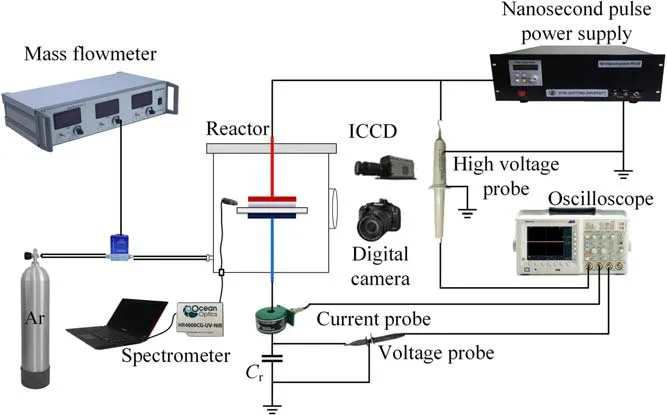
Figure 1.Diagram of experimental device and measurement system.
The above studies show that the pulse parameters have a significant impact on the discharge process of ns pulsed DBD,which affects discharge uniformity and the reactivity of DBD.Adjusting pulse parameters mainly affects the discharge process by changing the space electric field intensity and the distribution of space particles [31-33].The applied voltage and the pulse rise time significantly affect the value of breakdown voltage,which determines the space electric field and plasma chemical reaction rate.The pulse width affects the time of the voltage on the electrodes and also the interval time of the two discharges on the rise and fall edges in one pulse period.The pulse fall time affects the development process of second discharge.However,the majority of earlier investigations on ns pulsed DBD focused on the observation of experimental phenomena,the improvement of the application effects,and the realization of uniform discharge at specific experimental conditions.There is a lack of comprehensive studies on the mechanism of the ns pulsed DBD mode transition at different pulse parameters,which prevents the realization and application of uniform and reactive plasmas at atmospheric pressure.
In this work,the influence of pulse parameters (voltage amplitude,pulse width,and rise and fall times) on the uniformity of ns pulsed DBD is investigated by experimental diagnosis and one-dimensional fluid model simulation.The electrical parameters are obtained through separating the measured voltage and current waveforms.The plasma reactivity and the trend of electron temperature (Te) are evaluated by the measured optical emission spectra and the ratio of the two specific Ar spectral intensity.The spatial and temporal distributions of electrons,ions,metastable argon atoms and Teare simulated by the one-dimensional fluid model.With the obtained experimental and simulated results,the mechanism of the pulse parameters influencing on the discharge uniformity of Ar DBD is discussed.
2.Experimental setup and results
2.1.Experimental setup
The experimental setup is shown in figure 1,which has been reported in our previous work [34].The DBD electrode is placed in the center of the stainless-steel reactor,which can be vacuumed with a rotary pump.The DBD electrode structure includes two circular plate electrodes with a diameter of 50 mm and a quartz glass dielectric with a diameter of 80 mm on the grounded side.The gas gap is fixed at 2 mm.A ns pulse power supply is used to ignite discharge.The output voltage is in the range of 0-15 kV,the pulse width is between 0 and 5000 ns,and the pulse rise and fall times are in the range of 50-500 ns.During experiment,the pulse repetition frequency is fixed at 5 kHz.The applied voltage and current are measured by a North Star high voltage probe (PVM-5)and a Pearson current coil (2877).The voltage across the 2.2 nF measuring capacitor (Cr) is measured by a differential probe (Sapphir,LDP-6002),which is used for electrical parameter calculation.All of the signals are recorded by a Tektronix 3054 oscilloscope.Discharge images with long(1/8 s) and short (50 ns) exposure times are taken by a digital camera (Canon EOS 6D) and an intensified charge-coupled device (ICCD,Andor iStar 334 T),respectively.The optical emission spectra are acquired by an Ocean Optic HR4000CG spectrometer with 50 ms integration time.The working gas is high-purity argon (99.999% purity).
2.2.Experimental results
Figure 2 shows the discharge images of ns pulsed DBD obtained at different pulse parameters (voltage amplitude,pulse width,and rise and fall times),which can determine the uniformity of the discharge easily.It can be seen from figures 2(a) and (b) with different voltage amplitudes and pulse widths that at first,there are dim filaments in the discharge space of both discharge images.With the increase of the voltage amplitude and pulse width,the filaments disappear in the discharge space and the discharges stay in uniform mode.When the voltage amplitude and pulse width further increase,the filaments appear again and become bright.Figures 2(c) and (d) show the discharge images with different pulse rise and fall times,and it can be seen that with short pulse rise and fall times (both 50 ns) the discharges are uniform without filaments observed in space.With the extension of the pulse rise and fall times,the discharge becomes weak and the filaments appear in the space,which decreases the discharge uniformity.In addition,a plasma channel can occur uniformly,dispersedly or randomly at different locations in isolation from each other,forming filamentary discharge modes,including stochastically and self-organized discharge modes [35],which can be observed in figure 2.
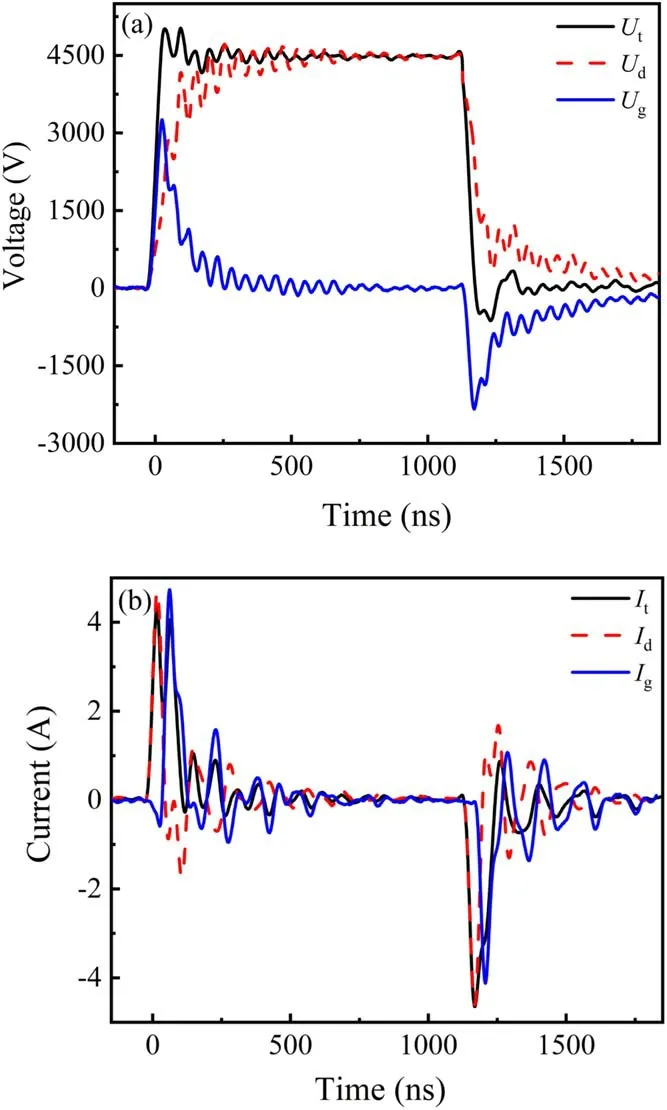
Figure 3.Separation of the voltage (a) and the current (b)waveforms.
It can be seen from figure 2 that the pulse parameters have a great influence on the uniformity of DBD,which involves the effects of the space electric field and reactive particles.To reveal the effect of the space electric field of DBD,it is necessary to separate the voltage across the gas gap(Ug) from the applied voltage (Ut) for the dielectric barrier acting as a capacitor in the circuit tolerating part of voltage(Ud) from Ut.Udcan be estimated by measuring the voltage across the inserted capacitor Cr(Um)because both Udand Umare the voltages on capacitive loads and there should be an amplification coefficient between them.Considering that the value of Ugwill be near zero when the discharge is extinguished,the amplification coefficient can be determined.Then,Ugcan be obtained by subtracting Udfrom Ut.For the conduction current (Ig),it represents the moving of the space charge and can be obtained by subtracting the displacement current (Id) from the total current (It),Idcan be obtained by extinguishing discharge [36,37],and the current waveforms are shown in figure 3(b).The waveforms of voltage are shown in figure 3(a).
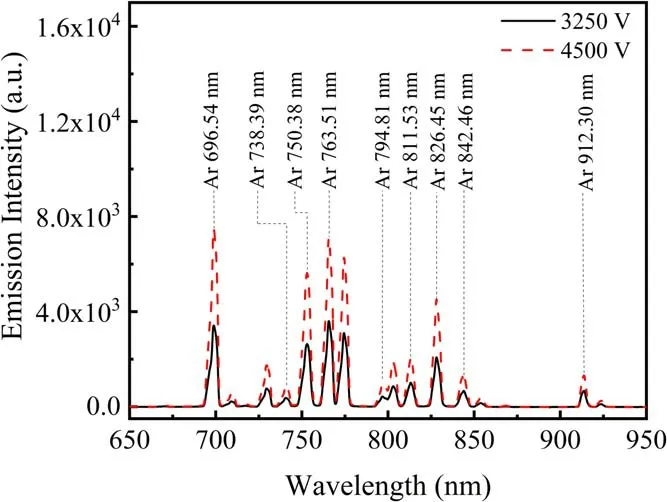
Figure 4. The optical emission spectra of the ns pulsed Ar DBD.
Figure 3(a) shows the voltage waveforms of Ut,Ug,and Udand figure 3(b)shows the current waveforms of It,Ig,and Idat 4500 V,1000 ns pulse width,and 50 ns rise and fall times.It can be seen that at the pulse rise edge of Ut,most of the voltage drops across the gas gap and there is only Idobserved,for the Ugdoes not reach breakdown value.With the increase of Ugto the breakdown value,the peak of Igappears and the value of Ugdecreases.The duration of the Ugpeak is very short at about 100 ns,which can suppress the excessive development of electronic avalanche.With the decrease of Ugto 0,the discharge is distinguished and nearly all of the voltages drop on the dielectric barrier.At the pulse fall edge of Ut,Uddrops slowly for the accumulated charge on the dielectric surface,which leads to a negative Ugpeak.When the negative Ugreaches the breakdown value,there is a second discharge with a negative peak of Igin one pulse.
The optical emission spectrum is recorded to get information on the plasma reactivity.Figure 4 shows the optical emission spectra of the ns pulsed Ar DBD at 3250 V and 4500 V with 1000 ns pulse width,and 50 ns rise and fall times.It can be seen that there are mainly Ar emission lines in the spectra,and the increased voltage enhances the intensity of the Ar lines and makes a change in the ratio of each line,which is related to the electron energy distribution and Te.The intensity ratio(IAr1/IAr2)of two Ar lines(696.54 nm and 912.30 nm)) with different excited energies (13.3 eV and 12.9 eV)is calculated for determining the trend of Te[37-40].A high value of IAr1/IAr2means high energy electrons taking more proportion and Tewould be high.A low value of IAr1/IAr2means low energy electrons taking more proportion and Tewould be low.Therefore,the trend of Tecan be determined from the optical emission spectra observation.
The changes in the space electric field,breakdown characteristics and plasma characteristics caused by the change of pulse parameters result in the change of DBD uniformity.Table 1 shows the two peak values of Ug(Ug1and Ug2) at the rise and fall edges,and the two peak values of Ig(Ig1and Ig2)at the experimental conditions of figure 2,which reveals the space electric field intensity at the breakdown moment and the electron density in the gap.The intensity ratios IAr1/IAr2at different pulse parameters are also included as an indicator of the variation of Te.
Table 1 shows that when Utincreases from 3250 to 5000 V,Ug1rises from 1674 to 3709 V,and Ug2rises from 1199 to 2922 V.It means the reduced electric field (E/n)gradually increases,which results in the increase of Teas shown in IAr1/IAr2increasing from 3.55 to 3.68.This leads to the increase of the electron energy and the reaction rates,thus promoting the development of electron avalanche and enhancing the electron density.Therefore,Ig1rises from 1.50 to 5.22 A,and Ig2rises from 1.60 to 4.86 A.Low Ut(3250 V) results in weak discharge,so that only weak filamentary discharges can be maintained and the discharge uniformity is poor.Along with the increase of Utand the enhancement of the spatial electric field strength,the electron density increases,which contributes to the fast expansion and overlapping of the discharge channels,and the plasma diffusing in the gap [41,42].The DBD develops from filamentary mode to uniform mode until the plasma fills the entire discharge space.With a further increase of the voltage(5000 V),the spatial electric field intensity is too strong and the charged particles become too much,causing the electron avalanche to develop excessively to form streamer discharge[43],and the high-density charged particles greatly affect the electric field distribution,resulting in electric field distortion,which makes DBD produce a large number of bright filaments.The essential difference between the voltage amplitudes increases from 3250 to 4500 V and that from 4500 to 5000 V should be the development of the electron avalanches.
The pulse width is related to the discharge interval between the first and second discharges in one pulse cycle,thereby affecting the coupling effect between the two discharges.Table 1 shows that while Ug2and Ig2have a greater increase with increasing the pulse width,the first discharge(Ug1and Ig1)is less affected.It is because with the extension of the pulse width,the space charges are recombined and the excited reactive species are decayed,which require a higher breakdown voltage in the reverse discharge.Therefore,Ug2increases from 1569 to 2513 V with the pulse width increasing from 100 to 5000 ns,which results in the increase of electron density and electron temperature.Then,Ig2increases from 2.06 to 4.06 A and IAr1/IAr2increases from 3.20 to 3.62.When the pulse width is too short,the discharge intensity of the reverse discharge at the pulse’s fall edge is weak,and the electron avalanche is not enough to achieve uniform discharge.With the pulse width increasing,the reverse discharge is further enhanced,both discharges enter the uniform mode,and the plasma looks uniform.When the pulse width is too long,the discharge on the fall edge is strengthened and forms filaments.
The increase in the pulse rise and fall times will cause a change in the pulse voltage rate,affecting the value of the breakdown voltage.When the rise time is extended from 50 to 500 ns,Ug1decreases from 2373 to 2096 V,causing the decrease of E/n and Te,which restricts the electrons from gaining energy and generates fewer free electrons,and Ig1decreases significantly from 3.68 to 1.60 A.However,the second discharge is less affected.Ug2and Ig2are maintainedat around 1800 V and 2.60 A,respectively.For the decrease of the electron density in the first discharge significantly,it is difficult for the discharge to fill the entire gap at the same time,and dim filaments appear in space.On the contrary,the increase of the pulse fall time has little effect on the first discharge,Ug1and Ig1are about 2300 V and 3.60 A within 50-500 ns pulse fall time.With the increase of the pulse fall time,the breakdown voltage Ug2decreases from 1834 to 1527 V,which decreases E/n in space in the pulse fall edge.Therefore,the peak value of Ig2decreases from 2.87 to 0.69 A and IAr1/IAr2also decreases.Long pulse fall time makes few accumulated charges on the barrier participating in the second discharge,which lowers the breakdown voltage and electron density.Therefore,the discharge uniformity decreases for the insufficient electrons.

Table 1.The plasma characteristics of ns pulsed DBD at different pulse parameters.
3.Fluid model and numerical simulation
3.1.Discharge processes
From the above experimental results,it can be seen that the parameters affect the discharge uniformity and plasma characteristics by influencing discharge processes at the pulse rise and fall edges.Therefore,the schematic diagram of electric field distribution and charge evolution of the ns pulsed Ar DBD gap in one cycle is given in figure 5 and the discharge process is discussed.Meanwhile,the ICCD images of the discharge processes at the pulse rise and fall edges are shown in figure 6 to support the discussion.
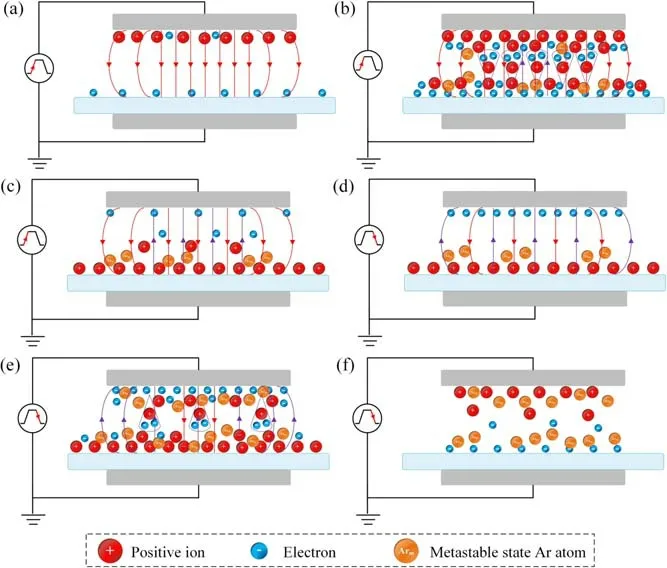
Figure 5. The discharge processes at the pulse rise and fall edges.
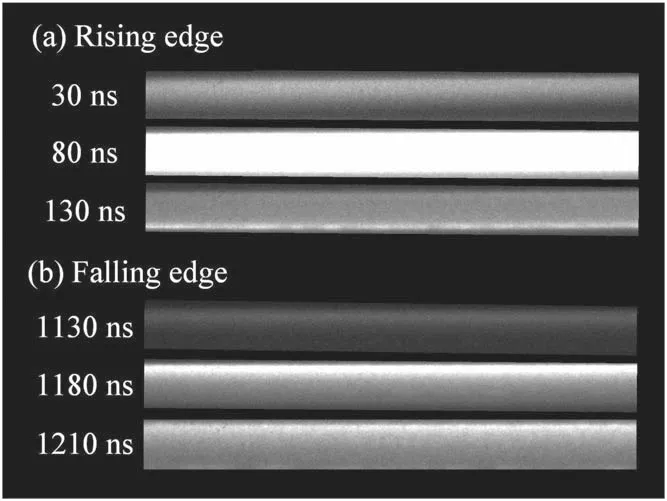
Figure 6.ICCD images of ns pulsed Ar DBD at(a)pulse rise and(b)fall edges at a voltage of 4500 V,pulse width of 1000 ns,and rise and fall time of 50 ns.
For the pulse rise edge,figure 5(a) shows the moment before the first breakdown discharge occurs in the gap.Under the applied electric field,the gas is ionized,and the ionization coefficient mainly depends on the electric field strength.Figure 5(b) is the moment of the first discharge occurring.The electric field accelerates the electrons to the instantaneous anode,and the electrons continue to collide with argon atoms,resulting in electron avalanches.Figure 5(c) shows the distribution after the first discharge.After the electron avalanche develops to the entire gas gap,the discharge is quickly extinguished because the electric field strength is reduced to an insufficient level to sustain the discharge.After the current pulse ends,the electric field in the gap tends to be uniformly distributed due to the residual charge.Correspondingly,figure 6(a) shows the ICCD images of the pulse rise edge with 50 ns time resolution.At the beginning of the discharge,the electric field near the anode is high,and a weak light-emitting thin layer is generated near the anode,which then develops into the whole gap.Subsequently,a lightemitting thin layer appears near the cathode as a result of the accumulated charges on the dielectric surface.Eventually,the discharge is extinguished for the decrease of the electric field strength.
For the pulse fall edge,figure 5(d) shows the moment before the second breakdown discharge occurs in the gap.It can be seen that the residual charges and metastable particles on the dielectric surface and space after the first discharge on the pulse rise edge will affect the discharge process on the pulse fall edge [44].With the decrease of Ut,the reverse electric field intensity is enhanced until the second breakdown.When the second breakdown occurs,similar as the first discharge,the ionization happens and the electron avalanche develops,as shown in figure 5(e).Figure 5(f)shows that after the second discharge,the residual charge recombines and dissipates.Figure 6(b) also shows the spatiotemporal evolutions of the reverse discharge.Different from the first,the luminescent thin layer appears at the high voltage electrode,because the electrons mainly come from the secondary electron emission from the metal electrode.
From the discussion of the discharge processes and the observed ICCD images,it can be seen that the electric field and the space particles are key factors,which affect the discharge process and uniformity.Because the electric field can be determined by an experimental method,the information of particles needs to be achieved to understand the mechanism of the pulse parameters on discharge uniformity [45,46].For the difficulty of experimental diagnosis,a one-dimensional fluid model is employed to simulate the spatial and temporal evolutions of electrons,ions,metastable argon atoms and Te.Although a onedimensional model can only simulate uniform distribution and cannot simulate the filamentary mode,the simulated results combined with the experimental results can still give information about the effects of the plasma parameters and pulse parameters on the discharge mode [47,48].
3.2.Fluid model
Figure 7 shows the geometric diagram of ns pulsed Ar DBD for the simulation similar to the experimental setup.The upper electrode is connected to the output of the pulse power supply,and the lower electrode is connected to the ground with a quartz dielectric barrier cover.dgrepresents the discharge gap distance and dsrepresents the dielectric thickness.
There are six kinds of particles considered in this model:ground state argon atoms (Ar),electrons (e),4 s metastable state atoms (Arm),argon ions (Ar+),4 s resonant state argon atoms(Ar(4s))and 4p excited state argon atoms(Ar(4p)).The model includes the coupled equations of charge species continuity,the electron energy transmission and the current conservation equation.The space-temporal evolution of various particles is indicated by the following equation.
where n is the density,Γ is flux density,S is the source term,j=e,i,4s,m,4p (e,i,4s,m,4p represent electrons,ions,resonant argon atoms,metastable argon atoms,and excited argon atoms,respectively).The flux density can be obtained from the following momentum equation.
where D and μ are the diffusivity and mobility corresponding to the particle,respectively,and μ of neutral particles is 0.E is the electric field intensity,which is determined by the current conservation equation and given as
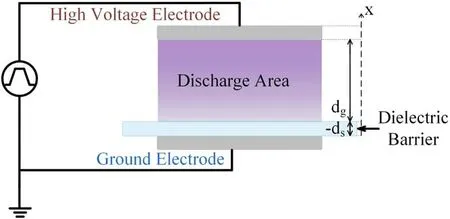
Figure 7.Geometric diagram of ns pulsed Ar DBD.
where Jgis the conduction current density,J0is the total current density,and ε0is the vacuum dielectric constant.
The electron temperature(Te)satisfies the electron energy conservation equation,taking the form of
where KBis the Boltzmann constant,Δεiand ridenote the energy loss and reaction rate of the ith reaction,respectively.Table 2 shows the important reactions and the corresponding reaction rates in the ns pulsed Ar DBD.
Considering the secondary electron emission from the dielectric and the electrode surface,the electron flux density at this position needs to be updated by
where γ is the secondary electron emission coefficient.The fluid model is a self-programmed FORTRAN code.More details of the fluid model and initial conditions can be found in[51-55].The limitation of the fluid model is that it cannot accurately capture the kinetic effects of pulsed discharge with the pulse rising phase less than 100 ns.But the simulation results can still help explain the experimental phenomena.
3.3.Spatial and temporal distributions of particles
The voltage and current waveforms obtained through the simulation model under the same experimental conditions of figure 3(4500 V,1000 ns pulse width,and 50 ns rise and fall times) are shown in figure 8.Idis calculated by Udfrom thesimulation and the capacitance value of the dielectric barrier is calculated by experimental results.Igis obtained by equations (4) and (5).Compared with figure 3,the values of Ugand Igobtained from the simulation model are in good agreement with those obtained from the experiment.It is noticed that there are small ripples in experimental Ugand Ig,and they are produced by the nonstandard output voltage waveform,which results from the stray capacitance and inductance in the internal circuit of the power supply.In simulation,we adopt a standard pulse voltage waveform to perform simulation.Therefore,there is no ripple in simulated Ugand Ig.The discharge process mainly depends on the peak values of Ugand Ig.Therefore,the missing ripple has no significant effect on the electrical parameters,which can be used to simulate the evolution of particles.
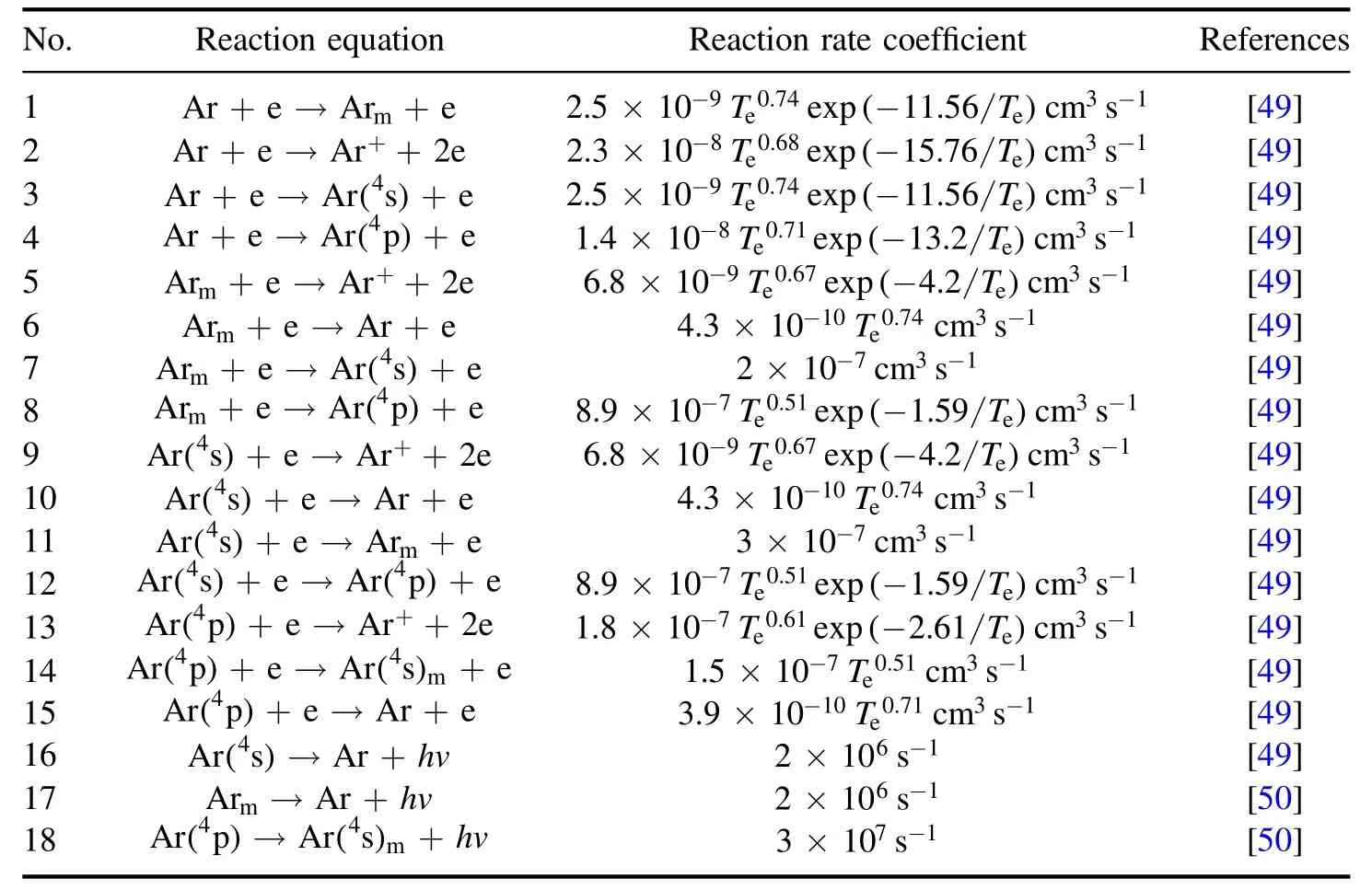
Table 2. The important reactions in the ns pulsed Ar DBD.
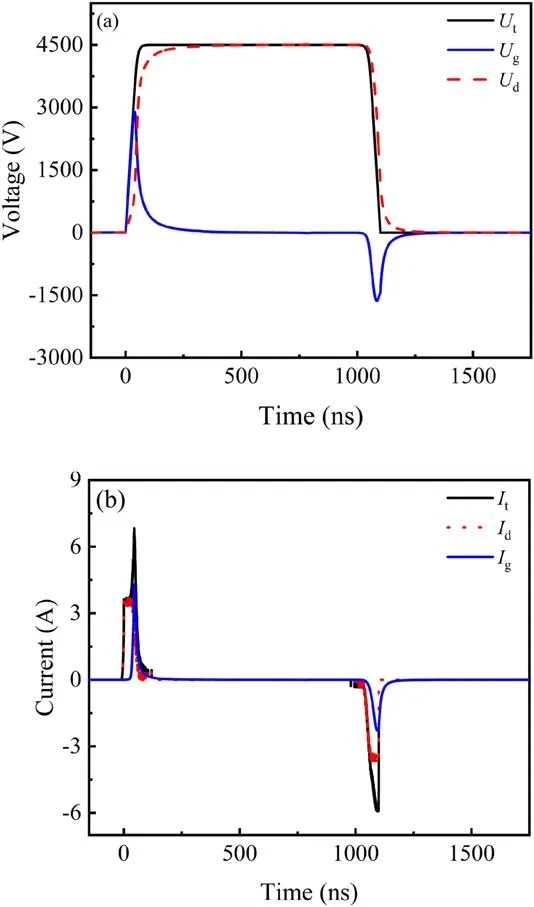
Figure 8. Simulation results of the separation of the voltage and current waveforms.
The spatial and temporal distributions of the electron density (ne),ion density (ni),Te,and Armdensity (nm) at the experimental conditions of 4500 V,1000 ns pulse width,and 50 ns rise and fall times are shown in figure 9.It can be seen that the ne,ni,Te,and nmshow two peaks during the pulse voltage corresponding to the two discharges at the pulse rise and fall edges.After the breakdown of the gas gap,the neincreases rapidly.Initially,with the help of the external electric field,a large number of electrons move to the momentary anode,causing a significant space charge effect.Subsequently,it leads to the faster movement of high-energy electrons in the gas gap to the momentary cathode,forming a cathode sheath,which accelerates the decline of the Ugand the extinction of the discharge.Furthermore,the temporal and spatial distribution trend of ion and Teis consistent with that of electrons,but the peak value of niis larger than that of ne.
During the first discharge,the neincreases rapidly,and the electrons collide with the argon atoms to generate Arm.After that,the discharge is extinguished,and nedecreases rapidly.However,Armhas a longer life time and decays much more slowly,and nmremains almost unchanged.Until the reverse discharge occurs,the neincreases again and promotes the occurrence of related plasma reactions,resulting in the further increase of the nmand maintaining the time on the millisecond scale.In addition,the peak of the nmis much higher than the peak of the ne,and the electrically neutral Armwill not be subject to drift induced by the electric field,which has a more uniform distribution in the discharge region.Therefore,the Armin the gap has a profound influence on the generation and development of the discharge and uniformity.
3.4.Effect of pulse parameters on particles densities
In section 3.3,the spatial and temporal distributions of ne,ni,Te,and nmhave been simulated in specific experimental conditions.In order to understand the influences of the pulse parameters on the discharge processes and uniformity,ne1,ne2,ni1,ni2,Te1,Te2,nm1and nm2are simulated at different voltage amplitudes,pulse widths,and rise and fall times as shown in figure 10,in which the ne1,ni1,Te1,nm1and ne2,ni2,Te2,nm2represent the maximum values of ne,ni,Teand nmat the pulse rise and fall edges,respectively.
The simulated results in figure 10 are consistent with the experimental results,and the increase of voltage amplitude has a significant improvement in the space particle density.As the voltage increases,the total current density increases,the space electric field strength increases,and the value of E/n increases.As the Terises,the electrons gain more energy,which leads to the increase of collision frequency between electrons and particles,and improves the efficiency of generating active particles.Compared with the first discharge,the increase of ne2and ni2is relatively small.This may be caused by the impact of residual charge after the first discharge.However,for the long lifetime of Arm,both of the two discharges are beneficial to enhance nm.Therefore,the nm2is much too high.When the voltage amplitude is low,neand nmare less,and the distribution is inhomogeneous.The electron avalanches cannot fill the whole discharge space at the same time.When the voltage amplitude is high,the neis too high and the spatial electric field distortion is serious,which is very easy to form streamer discharge and reduce the discharge uniformity.
The increase of pulse width mainly affects the discharge process at the pulse fall edge,which leads to the increase of ne2and Te2,ni2increasing first and then decreasing,and the decrease of nm2.With the increase of the pulse width,the interval time between the finish of the first discharge and the occurrence of the second discharge becomes longer,ne,ni,and nmdecrease before the second discharge for the quenching with background gas,which results in the increase of the breakdown voltage at the pulse fall edge.With a high breakdown voltage,ne2,ni2,and Te2increase.But the increase of the pulse width also causes more time dissipation and recombination of electrons and ions.In addition,the reduction of Armcauses the weakening of multi-step ionization.When the pulse width is increased to more than 600 ns,the nislightly decreases,and the neand Terise rates become smaller.When the pulse width is short,ne2is small,and the electron avalanches are insufficient to cover the whole space.The discharge image shows non-uniform with dim stripes.When the pulse width is too long,the space lacks Arm,which increases the breakdown voltage.Therefore,under a high electric field,bright filaments are formed,which decreases the discharge uniformity.
The adjusting of the pulse rise time would change the breakdown voltage value,and then affect ne,ni,Te,and nm.From figure 10(c),it can be seen that with the increase of the pulse rise time,ne1and ni1decrease,nm1first increases and then decreases,ne2increases slightly,and nm2decreases.It is because with the increase of the pulse rise time,the breakdown voltage decreases,resulting in the decrease of E/n and Te1,the excitation and ionization processes are weakened,and fewer electrons and ions are generated.Because the discharge time increases with the increasing rise time,the competition between the generation of Armby electrons and argon atom collision and the quenching of Armby the argon atom causes the nm1to first increase and then decrease.Due to the effect of Armmulti-step ionization,ne2increases slightly,and nm2decreases.Finally,due to the low electron density of the first discharge at the pulse rise edge,the discharge is insufficient with space with dim stripes in space.The change of the pulse fall time only affects the second discharge at pulse fall edge.As seen from figure 10(d),ne1,ni1,nm1and Te1are almost unchanged.With the increase of pulse fall time,the breakdown voltage decreases,which decreases E/n and then results in the decline of ne2,ni2,nm2and Te2.Therefore,a long pulse fall time leads to poor discharge uniformity.
The previous works mostly focused on the determination of the experimental parameters [56,57] and electrode configurations[58,59]for the realization of the uniform mode of ns pulsed DBDs and they attributed the mechanisms to the properties of pulsed discharge,such as a high E/n to promote electron avalanche[60]and short discharge duration to prevent streamer development [43,61].Our research is also based on the optimized experimental parameters for the realization of the uniform discharge mode,but further explores the influences of experimental parameters on the discharge process with the experimental and simulated results.With the help of ICCD observation and numerical simulation of the spatiotemporal evolution of plasma parameters,the evolutions of the spatial electric field and space particles are used to explain the mode transition,which are helpful to further understand the discharge behavior and realize uniform,stable,and reactive plasmas at atmospheric pressure.
4.Conclusion
In this work,the effects of pulse parameters(voltage aptitude,pulse width,rise and fall time) on the uniformity of the ns pulsed Ar DBD are investigated by experimental diagnosis and numerical simulation.It is found that with the increase of voltage aptitude and pulse width,the discharge mode of DBD transitions from non-uniform to uniform,and with a further increase of voltage aptitude and pulse width,the uniform DBD becomes non-uniform again.The increases in pulse rise and fall times would decrease the discharge uniformity.With the separation of voltage and current waveforms and the observation of the optical emission spectra of the ns pulsed Ar DBD,it is found that with the increase of the voltage aptitude,the breakdown voltages at the pulse rise and fall edges increase,which leads to the increase of the current peak value and Te.Therefore,the discharge becomes uniform from insufficient discharge and then non-uniform with bright filaments.The increase of pulse width would result in the increase of the current peak value at the fall edge for the higher breakdown voltage and Te.Then,the discharge uniformity becomes better and gets worse with the increase in pulse width.The increases in pulse rise and fall times decrease the breakdown voltages at the pulse rise and fall edges,which decreases the current peak value,Te,and also the discharge uniformity.With a one-dimensional fluid model,the spatial and temporal distributions and the influences of the pulse parameters of ne,ni,Teand nmare simulated.The spatial and temporal distributions of the particles are consistent with the observation of an ICCD camera for the discharge processes at the pulse rise and fall edges.The breakdown voltage and the tendencies of ne,ni,Teand nmvary with the pulse parameters,the space electric field intensity and the space particles’densities are responsible for the variation of discharge uniformity.Less space particles would result in weak discharge with dim strips and more space particles would lead to bright filaments and decrease the discharge uniformity.The results would contribute to the improvement of atmospheric pressure plasma reactivity and discharge uniformity.
Acknowledgments
This work is supported by National Natural Science Foundation of China (Nos.52177148,51777091 and 52037004) and Postgraduate Research &Practice Innovation Program of Jiangsu Province (KYCX23_1449).
 Plasma Science and Technology2023年11期
Plasma Science and Technology2023年11期
- Plasma Science and Technology的其它文章
- Preparation of highly efficient antibacterial non-woven by facile plasma-induced graft polymerizing of DADMAC
- Multiple chemical warfare agent simulant decontamination by self-driven microplasma
- Wet flashover voltage improvement of the ceramics with dielectric barrier discharge
- Investigation of phase modulation and propagation-route effect from unmatched large-scale structures for Doppler reflectometry measurement through 2D full-wave modeling
- SOLPS-ITER drift modeling of neon impurity seeded plasmas in EAST with favorable and unfavorable toroidal magnetic field direction
- Preparation of a beam emission spectroscopy diagnostic based on a Lymanalpha line to diagnose core and edge-plasma density fluctuation on the HL-2A tokamak
